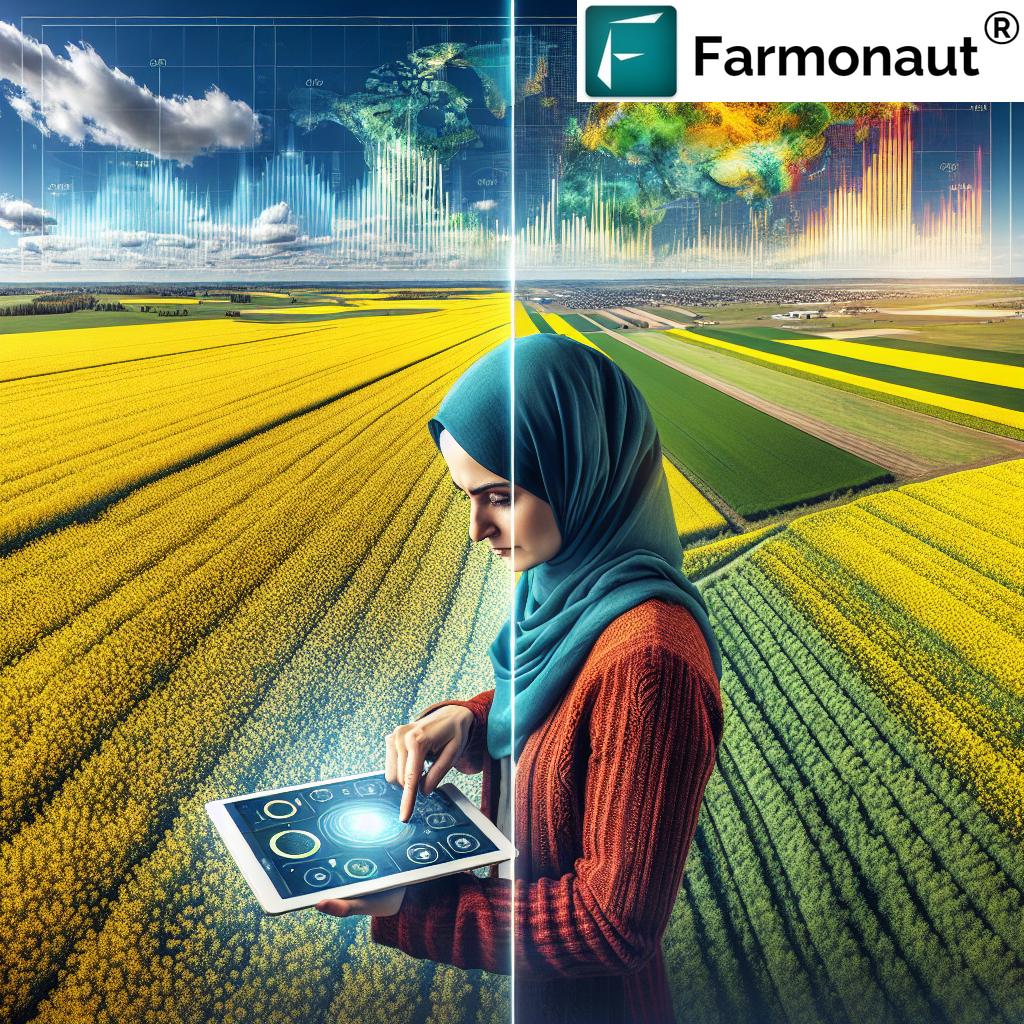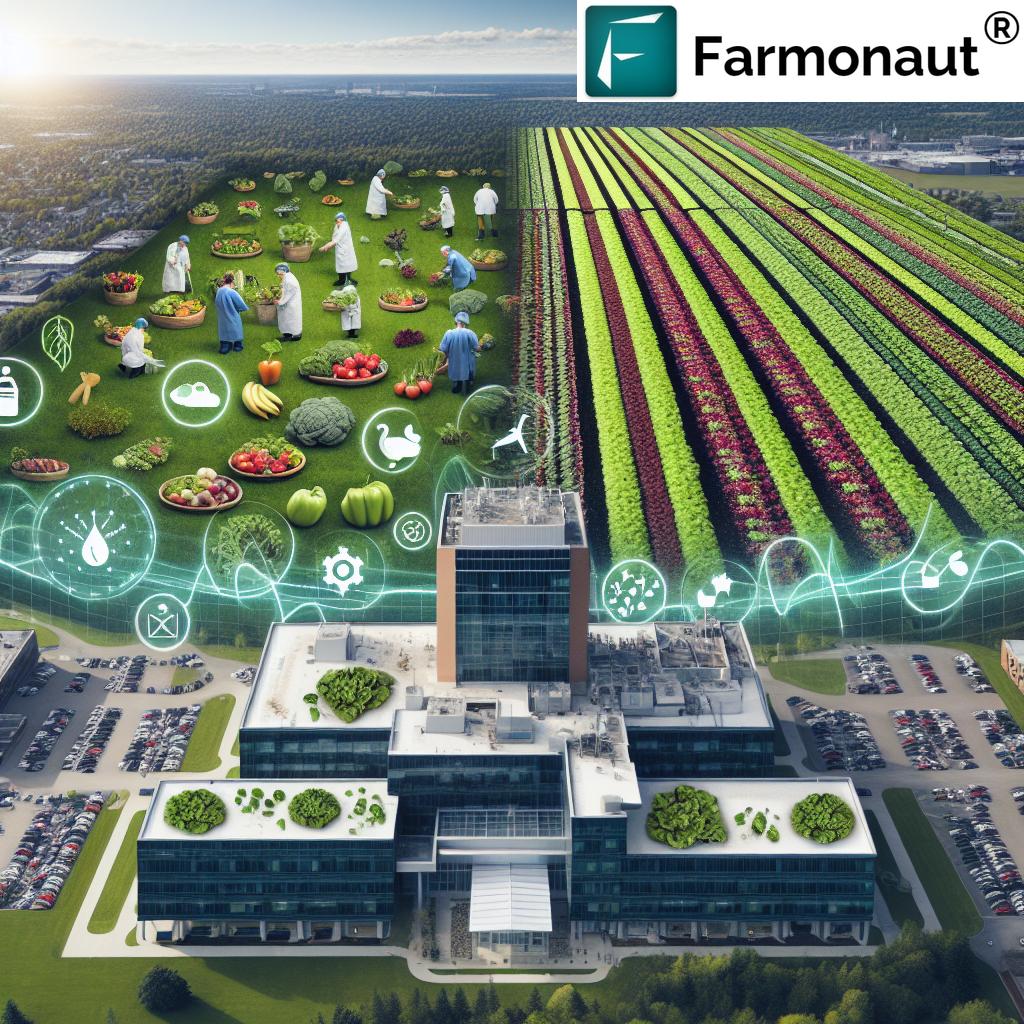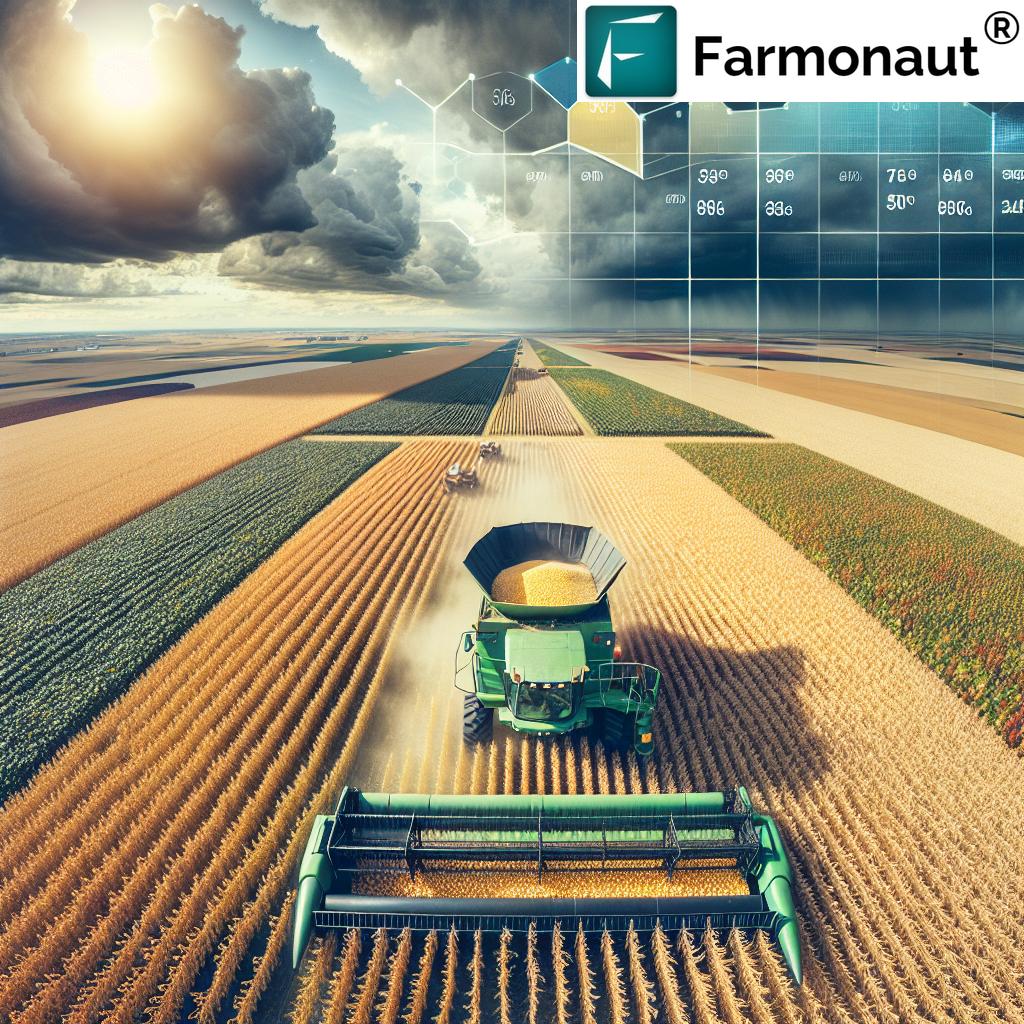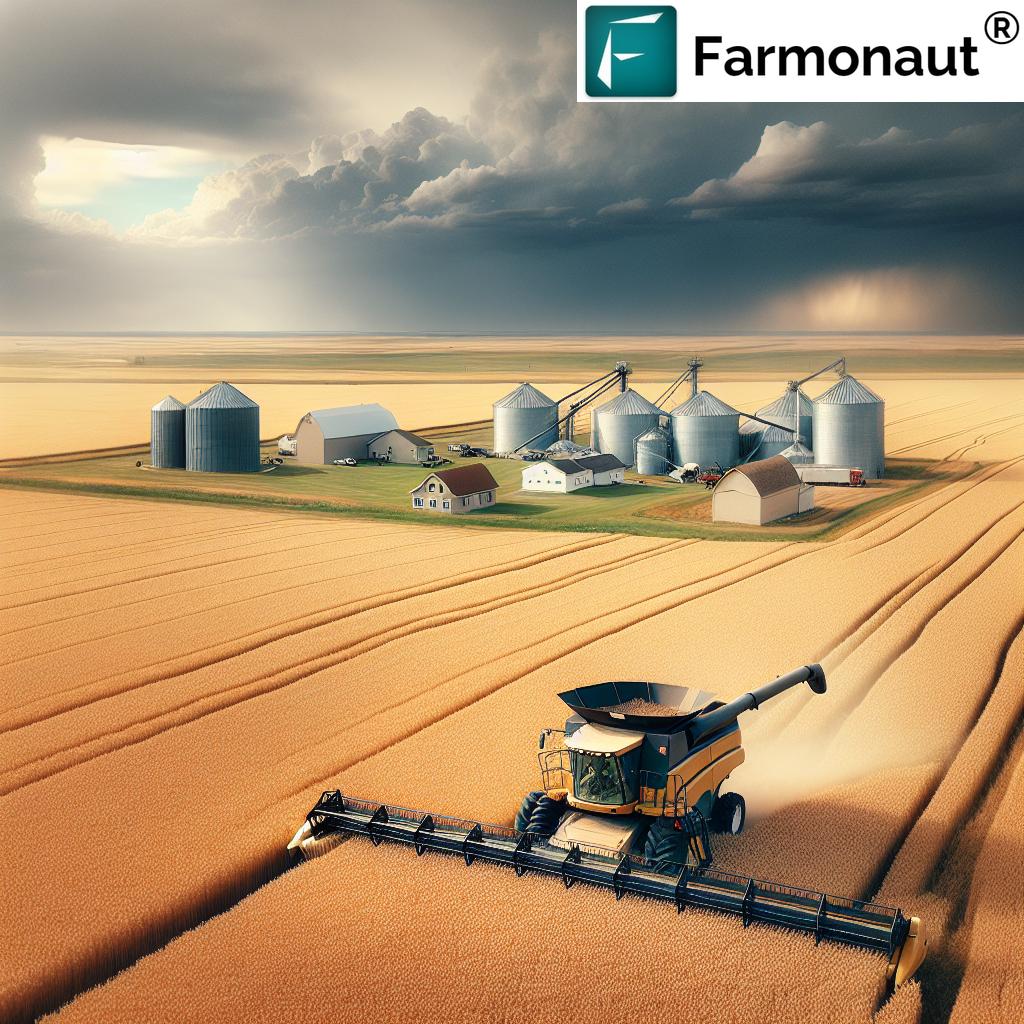Revolutionizing Canadian Horticulture: Farmonaut’s Guide to Sustainable Greenhouse Technology Trends
“Canadian greenhouses using advanced technology can reduce energy costs by up to 30% through sustainable solutions.”
Welcome to Farmonaut’s comprehensive guide on the latest greenhouse technology trends and sustainable horticulture practices that are transforming the Canadian horticultural landscape. As pioneers in agricultural technology, we at Farmonaut are excited to share our insights into the cutting-edge innovations that are reshaping the way we grow crops in controlled environments.
In this blog post, we’ll explore a wide range of topics, from advanced crop protection solutions to innovative environmental control techniques. Whether you’re a seasoned grower or new to the world of greenhouse cultivation, our expert analysis will provide valuable information to help you stay ahead in this rapidly evolving industry.
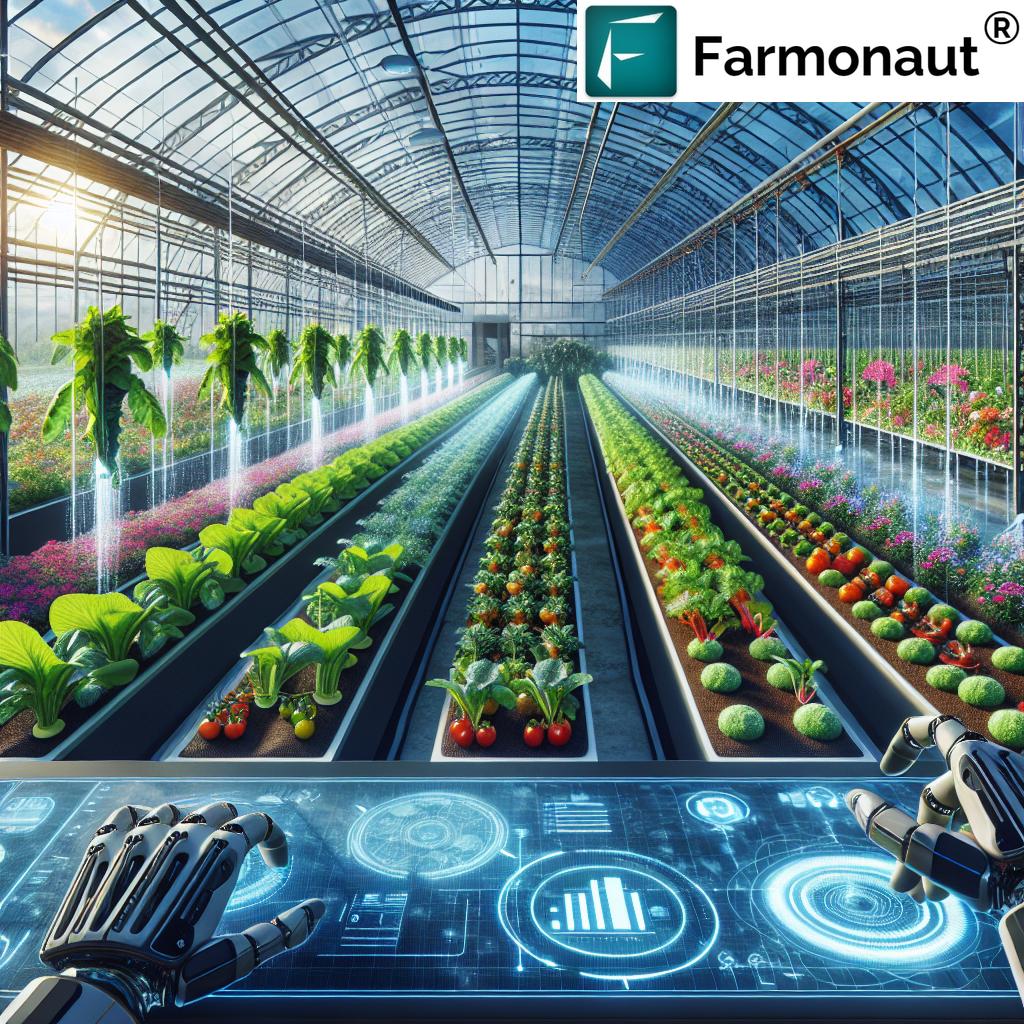
The Evolution of Greenhouse Technology in Canada
The Canadian horticulture sector has witnessed a significant transformation in recent years, driven by the need for sustainable and efficient growing practices. From London, Ontario to Burnaby, BC, greenhouse operators are embracing innovative technologies to overcome challenges posed by the harsh Canadian climate and to meet the growing demand for year-round produce.
- Increased adoption of high-tech solutions
- Focus on energy efficiency and sustainability
- Integration of data-driven decision-making tools
As we delve into the latest trends, it’s important to note how these advancements are not just improving productivity but also contributing to the overall sustainability of the horticultural industry.
Advanced Crop Protection Solutions
One of the most critical aspects of successful greenhouse cultivation is effective crop protection. Modern greenhouses are implementing sophisticated systems to safeguard plants from pests and diseases while minimizing the use of harmful chemicals.
- Integrated Pest Management (IPM): This holistic approach combines biological controls, cultural practices, and targeted pesticide use.
- Biocontrols: The use of beneficial insects and microorganisms to manage pest populations naturally.
- Climate Screens: Advanced materials that provide a physical barrier against pests while regulating temperature and humidity.
These solutions not only protect crops but also align with the growing consumer demand for sustainably grown produce. By reducing reliance on chemical inputs, growers can improve the quality and safety of their products while minimizing environmental impact.
Revolutionary Irrigation Systems
Advanced irrigation systems are at the forefront of water conservation efforts in Canadian greenhouses. These systems are designed to deliver precise amounts of water and nutrients directly to the plant roots, significantly reducing waste and improving crop health.
- Drip Irrigation: Delivers water and nutrients directly to the root zone, minimizing evaporation and runoff.
- Soil Moisture Sensors: Provide real-time data on soil conditions, allowing for precise irrigation scheduling.
- Recirculating Systems: Collect, treat, and reuse irrigation water, dramatically reducing overall water consumption.
By implementing these advanced irrigation technologies, Canadian growers can achieve substantial water savings while improving crop yields and quality. This is particularly crucial in regions where water resources are limited or under stress.
Environmental Control Techniques
Maintaining optimal growing conditions is essential for maximizing crop yields and quality. Modern greenhouse environmental control systems offer unprecedented precision in managing climate parameters.
- Smart Climate Controllers: Use AI and machine learning to predict and adjust environmental conditions.
- CO2 Enrichment: Carefully monitored and controlled to enhance photosynthesis and plant growth.
- Humidity Management: Advanced dehumidification systems that prevent disease and optimize plant transpiration.
These sophisticated control systems allow growers to create ideal microclimates for different crop varieties, ensuring optimal growth conditions throughout the year. This level of control not only improves productivity but also enables the cultivation of a wider range of crops in Canadian greenhouses.

Innovations in Horticultural Lighting
Horticultural lighting innovations have revolutionized the way we approach year-round cultivation in Canada. With the country’s long winters and limited natural light in many regions, advanced lighting solutions are crucial for maintaining consistent crop production.
- LED Technology: Energy-efficient LEDs with customizable spectra to optimize plant growth and development.
- Dynamic Lighting Systems: Adjustable light intensity and duration to mimic natural light cycles and boost plant productivity.
- Interlighting: Supplemental lighting placed within the crop canopy to improve light distribution and crop quality.
These lighting innovations not only extend the growing season but also allow for precise control over plant growth stages, flowering, and fruiting. This level of control enables Canadian growers to produce high-quality crops consistently, regardless of external weather conditions.
“Modern automated greenhouse systems can increase crop yields by 20-50% compared to traditional methods.”
Efficient Heating Methods
In the Canadian climate, efficient greenhouse heating is not just a matter of comfort for plants—it’s essential for survival and productivity. Modern heating systems are designed to maintain optimal temperatures while minimizing energy consumption and carbon footprint.
- Ground Source Heat Pumps: Utilize stable underground temperatures to heat greenhouses efficiently.
- Biomass Boilers: Use renewable organic materials as fuel, reducing reliance on fossil fuels.
- Thermal Screens: Retractable insulation layers that conserve heat during cold periods.
These heating solutions not only reduce operating costs but also align with Canada’s commitment to reducing greenhouse gas emissions. By adopting these technologies, growers can significantly improve their energy efficiency and environmental sustainability.
Advanced Crop Management Strategies
Greenhouse crop management has evolved from intuition-based decisions to data-driven strategies. Advanced technologies are now enabling growers to monitor and manage their crops with unprecedented precision.
- Plant Sensors: Monitor vital signs like sap flow and leaf temperature in real-time.
- Imaging Systems: Use multispectral cameras to detect early signs of stress or disease.
- Crop Modeling Software: Predicts crop development and yield based on environmental data.
These technologies allow growers to respond quickly to plant needs, optimize resource use, and maximize crop quality and yield. By leveraging data analytics, Canadian greenhouse operators can make informed decisions that lead to more sustainable and profitable operations.
Automation and Robotics in Greenhouses
Greenhouse automation technology is transforming labor-intensive tasks and improving overall operational efficiency. From planting to harvesting, robots and automated systems are becoming increasingly common in Canadian greenhouses.
- Automated Seeding and Transplanting: Precise and efficient planting systems that reduce labor costs.
- Harvesting Robots: Equipped with sensors to determine fruit ripeness and gently pick produce.
- Autonomous Mobile Platforms: Transport materials and assist with crop maintenance tasks.
These automation solutions not only address labor shortages but also improve consistency and reduce the risk of human error. As technology continues to advance, we can expect to see even more sophisticated automation in Canadian greenhouses.
Sustainable Energy Solutions for Greenhouses
Sustainable greenhouse energy solutions are crucial for reducing the environmental impact of year-round cultivation in Canada. Innovative approaches to energy generation and conservation are helping growers minimize their carbon footprint.
- Solar PV Systems: Generate clean electricity to power greenhouse operations.
- Cogeneration: Combined heat and power systems that efficiently use natural gas.
- Energy Curtains: Retractable screens that provide insulation and light control.
By implementing these sustainable energy solutions, Canadian greenhouse operators can significantly reduce their reliance on the grid and fossil fuels. This not only lowers operational costs but also contributes to the industry’s overall sustainability goals.
The Role of Data and Analytics in Modern Horticulture
Data-driven decision-making is becoming increasingly important in the horticulture sector. Advanced analytics and artificial intelligence are helping growers optimize every aspect of their operations.
- Predictive Analytics: Forecast crop yields, market demand, and potential issues.
- Big Data Integration: Combine data from various sources to gain comprehensive insights.
- Machine Learning Algorithms: Continuously improve crop management strategies based on historical data.
At Farmonaut, we understand the power of data in modern agriculture. Our satellite-based crop monitoring system provides growers with valuable insights into crop health and field conditions. By leveraging this technology, Canadian greenhouse operators can make more informed decisions and improve their overall productivity.
Explore our satellite-based solutions:
Emerging Trends in Greenhouse Structures
The design and construction of greenhouse structures are evolving to meet the demands of modern horticulture. Canadian growers are adopting innovative designs that maximize efficiency and sustainability.
- Vertical Farming Systems: Maximize space utilization in urban areas.
- Smart Glass: Dynamically adjusts light transmission based on crop needs.
- Aeroponic Systems: Soil-less cultivation that reduces water use and increases crop density.
These advanced greenhouse structures are enabling Canadian growers to produce more food in smaller spaces, with greater control over the growing environment. This is particularly important in urban areas where land is at a premium.
The Future of Canadian Greenhouse Horticulture
As we look to the future, the Canadian greenhouse horticulture sector is poised for continued growth and innovation. Emerging technologies and sustainable practices are opening up new possibilities for year-round cultivation in even the most challenging climates.
- AI-Driven Crop Management: Fully autonomous systems that optimize all aspects of plant growth.
- Nanotechnology in Agriculture: Nano-sensors and smart materials for precise nutrient delivery and pest control.
- Closed-Loop Ecosystems: Self-sustaining greenhouse systems that minimize external inputs.
These advancements will not only increase productivity but also contribute to Canada’s food security and sustainability goals. As a leader in agricultural technology, Farmonaut is committed to supporting Canadian growers in adopting these innovative solutions.
For developers interested in integrating our satellite and weather data:
Farmonaut API
API Developer Documentation
Greenhouse Technology Trends Comparison
| Technology Type | Sustainability Impact | Cost Efficiency | Adoption Rate |
|---|---|---|---|
| Advanced Irrigation Systems | ★★★★★ | ★★★★☆ | 75% |
| Environmental Control Techniques | ★★★★☆ | ★★★★★ | 85% |
| Efficient Heating Methods | ★★★★★ | ★★★☆☆ | 60% |
| Automation Technologies | ★★★☆☆ | ★★★★★ | 50% |
| Sustainable Energy Solutions | ★★★★★ | ★★★☆☆ | 40% |
Conclusion: Embracing Innovation for a Sustainable Future
The Canadian greenhouse horticulture industry is at the forefront of technological innovation, driving sustainable practices and improved productivity. By embracing these advanced technologies and sustainable methods, growers can overcome the challenges posed by the Canadian climate and meet the growing demand for fresh, locally-grown produce year-round.
At Farmonaut, we’re proud to be part of this agricultural revolution, providing cutting-edge satellite-based solutions that empower growers to make data-driven decisions. As we continue to innovate and develop new technologies, we remain committed to supporting the Canadian horticulture sector in its journey towards a more sustainable and productive future.
We invite you to explore our range of services and join the community of forward-thinking growers who are shaping the future of Canadian horticulture. Together, we can cultivate success and sustainability in equal measure.
Frequently Asked Questions (FAQ)
- What are the main benefits of adopting advanced greenhouse technologies?
Advanced greenhouse technologies offer improved crop yields, reduced resource consumption, better pest management, and year-round production capabilities. - How can Canadian growers finance the adoption of new greenhouse technologies?
Growers can explore government grants, low-interest loans for agricultural improvements, and partnerships with technology providers for flexible financing options. - What role does artificial intelligence play in modern greenhouse management?
AI helps in predictive maintenance, optimizing growing conditions, automating tasks, and providing data-driven insights for better decision-making. - How do sustainable greenhouse practices contribute to Canada’s environmental goals?
Sustainable practices reduce water usage, minimize chemical inputs, lower energy consumption, and decrease overall carbon emissions from the agricultural sector. - What are the challenges in implementing new technologies in existing greenhouse operations?
Challenges include initial investment costs, staff training, integration with existing systems, and adapting to new management practices.







